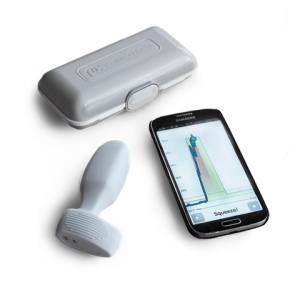Step-by-Step Guide to Properly Exercising the Pelvic Floor Muscles
Leaking a few drops of urine when you overexert yourself, laugh, or sneeze is so common that many women see it as a normal part of life. It’s called urinary incontinence (UI), and while it is prevalent—one in three women experiences UI at some point in her life—it’s not a normal part of life or of getting older.
Sometimes UI comes on gradually—you notice it for the first time when a few drops slip out as you laugh with your girlfriends during a lunch you’re hosting. You quickly excuse yourself from the table to do damage control. “This has never happened before,” you think.
Sometimes urine leakage is more severe and comes on suddenly after a major life event, such as childbirth. “I’ve never been quite the same since” women have reported.
If you’re one of the millions of women who experience uncomfortable and embarrassing urine leakage, whether it’s a few drops (or more) occasionally or regularly, the good news is that there are things you can do to reduce or even eliminate UI. If you’ve never experienced leakage and you want to reduce your odds of it happening, this post is for you, too.
Read on to learn how more about the many benefits of strengthening your pelvic floor (Kegel) muscles and how to properly perform Kegel exercises.
What Is the Pelvic Floor?
The pelvic floor is the muscular base of your abdomen. It’s made up of muscles, ligaments, and connective tissues that support the organs of the pelvis, including the bladder, bowel (large intestine), and (in women) the uterus.
When these vital muscles become weakened from strain during pregnancy, childbirth, or from hormonal changes during menopause, you may begin to leak urine, especially when you laugh, cough, sneeze, or strain during exercise. Weak pelvic floor muscles can also lead to pelvic organ prolapse, which is when a pelvic organ (such as the bladder) drops from its normal position and pushes against the walls of the vagina.
 Pelvic floor exercises, with or without a Kegel exerciser like PeriCoach, can help you strengthen these muscles and help you prevent, reduce, or even reverse UI and other problems. Here’s the thing: Even though pelvic floor muscle training is recommended as a first-line treatment for UI, at least 50% of women do not exercise their pelvic floor muscles correctly. PeriCoach aims to change that.
Pelvic floor exercises, with or without a Kegel exerciser like PeriCoach, can help you strengthen these muscles and help you prevent, reduce, or even reverse UI and other problems. Here’s the thing: Even though pelvic floor muscle training is recommended as a first-line treatment for UI, at least 50% of women do not exercise their pelvic floor muscles correctly. PeriCoach aims to change that.
Here’s your step-by-step guide to properly performing Kegel exercises:
Step 1: Identify the right muscles. The simplest way to do this is to stop urination midstream. If you succeed, you’ve identified your pelvic floor muscles. Do this only once or twice to identify the right muscles, not as a quick way to do your Kegels, as it can increase your risk of a urinary tract infection (UTI).
Step 2: Gather your goods. Place your Kegel exerciser (if using one), your smartphone, and a lubricant within reach (note: make sure the Bluetooth on your phone is enabled, and that your smartphone and assistive device are synced).

Step 3: Get into position. You can do Kegel exercises sitting down, standing, or lying down. We recommend lying down if you’re able, both because it puts less pressure on your pelvic floor, and because it enables you to use an assistive device. If you choose to lie down, get into a position as if you’re about to do crunches, with knees bent.
Step 4: Once in position, lubricate and insert the PeriCoach device (if using), or, alternatively, use one or two fingers to help you feel your muscles contract. If you prefer to use nothing, that’s fine, too. If you are using the PeriCoach for the first time, select “Free Exercise” in the programs to get familiar with using the device and do the following steps:
- Tighten your pelvic floor muscles, holding the contraction for five seconds.
- Release, then relax for five seconds.
- Taking a deep breath, inhaling deeply, and exhaling slowly will help you relax involuntary muscles that are not under your conscious control.
- Repeat five to 10 times.
The relaxation phase of Kegel exercises is just as important as the contraction phase, especially for women who have experienced a tightening or shrinking of the vaginal muscles due to a prolonged period of celibacy or due to menopausal changes, which can interfere with the enjoyment of penetrative sex. Make sure to relax for a full five seconds between contractions.
Use Proper Form
It’s very important to keep the muscles of the abdomen, buttocks, and thighs relaxed during pelvic floor muscle training. However, your anal sphincter muscle should contract during Kegels. To distinguish between the muscles of the anus and those of the buttocks, squeeze your bum as if you’re doing backward leg lifts. Then squeeze your muscles as if you’re trying to stop yourself from having a bowel movement—you should feel the difference between the two contractions.
Aim for at least three sets of 10 repetitions per day. Day-by-day, work your way up to keeping the muscles contracted for 10 seconds and relaxing for 10 seconds. You may also work your way through the pre-programmed exercise regimens within the PeriCoach app.
Read stories from real women about how PeriCoach has helped them, and be on your way to optimal pelvic health with our technically-advanced pelvic floor exerciser!


